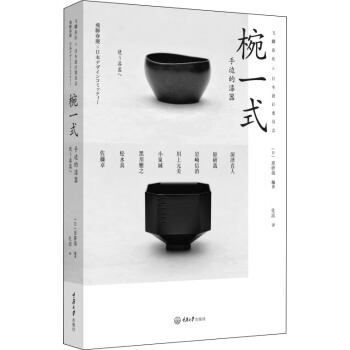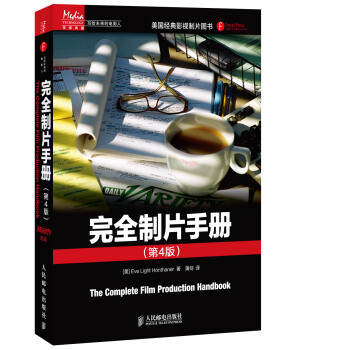

具體描述
産品特色
內容簡介
《完全製片手冊(第4版)》是一本為學生和電影電視業的專業人士而著的綜閤指南,涵蓋從前期準備到完成拍攝,再到後期製作的方方麵麵,並介紹瞭獨立電影和低成本電影製作、電視製作、商業片製作、財稅刺激政策、特效製作和新媒體等相關內容,另外還推薦瞭談判技巧和有價值的業內生存技巧。在《完全製片手冊(第4版)》中你將發現影片所需的全部基本製片錶格和會計錶格,以及前期製作時間錶、前期製作和拍攝完成的打包清單、後期製作工作流程錶。《完全製片手冊(第4版)》是為學生和入行新手,以及執行製片人、製片主任、助理導演、製片協調人和其他製片人員提供的一本寶貴的易於使用的參考書,對完成一部電影所需的步驟和工作方式進行瞭細緻入微的說明。
本次第4版修訂的內容包括以下幾方麵。
有關紀錄片、短片和電影節的獨立電影和低成本電影製作內容
有關電視製作和新媒體製作的內容
財稅政策
關於“環保拍攝”的建議,行業政策及對動物的使用
關於保密協議、日程錶、旅行、船運、在國外工作、雇用未成年人、通信及數字前後期製作的新內容
《完全製片手冊(第4版)》作者伊芙·漢賽娜(Eve Light Honthaner)在娛樂行業已有多年的任職經曆,主要領域是製片管理。她曾擔任過不同的職位,從製片助理到執行製片人都有所涉及。她是美國製片人協會的成員,她參與拍攝的影片包括:《泰坦尼剋號》(Titanic)、《新婚告急》(Just Married)、《熱帶驚雷》(Tropic Thunder)等。她還是《好萊塢奮鬥:娛樂行業的生存法則》(Hollywood Drive: What It Takes to Break In, Hang In & Make It in the Entertainment Industry)一書的作者,她每年夏天在南加州大學電影藝術學院授課,並在全美各地區開辦講座。
作者簡介
伊芙?漢賽娜(Eve Light Honthaner)在娛樂行業已有多年的任職經曆,主要領域是製片管理。她曾擔任過不同的職位,從製片助理到執行製片人都有所涉及。她是美國製片人協會的成員,她參與拍攝的影片包括:《泰坦尼剋號》(Titanic)、《新婚告急》(Just Married)、《熱帶驚雷》(Tropic Thunder)等。她還是《好萊塢奮鬥:娛樂行業的生存法則》(Hollywood Drive:What It Takes to Break In, Hang In Make It in the Entertainment Industry)一書的作者,她每年夏天在南加州大學電影藝術學院授課,並在全美各地區開辦講座。精彩書評
本書是為學生和入行新手,以及執行製片人、製片主任、助理導演、製片協調人和其他製片人員提供的一本寶貴的易於使用的參考書,該指南對於完成一部電影所需的步驟和工作方式提供瞭細緻入微的說明。目錄
目 錄第1章 製片團隊及其分工 1
1.1 引言(Introduction) 1
1.2 製片人員(Producers) 1
1.2.1 監製(Executive Producer) 2
1.2.2 製片人(Producer) 2
1.2.3 聯閤製片人(Co-Producer) 2
1.2.4 執行製片人(Line Producer) 2
1.2.5 後期製片人(Post Production Producer) 3
1.2.6 助理製片人(Associate Producer) 3
1.3 製片管理(Production Management) 3
1.3.1 製片主任(Unit Production Manager) 3
1.3.2 第一助理導演(First Assistant Director) 4
1.3.3 第二助理導演(Second Assistant Director) 4
1.3.4 製作總監(Production Supervisor) 4
1.3.5 製作協調人(Production Coordinator) 4
1.4 本章錶格(Forms in This Chapter) 4
第2章 製片辦公室 13
2.1 引言(Introduction) 13
2.2 辦公空間(Office Space) 13
2.3 辦公室的建立(Setting Up) 15
電話係統(Phone Systems) 17
2.4 製片“百寶箱”(The Traveling Production Kit) 18
2.5 電話接待(Answering the Phone) 20
2.6 保密工作(Confidentiality) 20
2.6.1 碎紙處理(Shredding) 20
2.6.2 水印(Watermarking) 21
2.7 製片助理(Production Assistants) 21
2.8 實習生(Interns) 22
2.9 技術為王(Ain’t Technology Great?) 23
招聘技術員(Techie Wanted) 23
2.10 攝製組成員因公務駕駛私傢車(Employees Driving Their Own Vehicles for Business Purposes) 23
2.11 人員安排和工作分配(Staff Scheduling and Assignment of Duties) 23
2.12 工作人員會議(Staff Meetings) 24
2.13 工作午餐(Office Lunches) 24
2.14 時間管理(Time Management) 25
2.15 庫存單、使用記錄單和領取單(Office Inventories, Logs, and Sign-Out Sheets) 25
2.16 文件(The Files) 26
2.16.1 空白錶格文件(Files of Blank Forms) 26
2.16.2 電影、電視電影、有綫電視及網絡文件(Files for Features, Movies for Television, Cable or Internet) 27
2.16.3 電視連續劇文件(Series Files) 29
2.16.4 每日文件(Day Files) 29
2.17 本章錶格(Forms in This Chapter) 29
第3章 基礎會計知識 35
3.1 引言(Introduction) 35
3.2 製片會計(The Production Accountant) 35
3.3 會計部門(The Accounting Department) 36
3.4 薪資發放(Handling Payroll) 36
3.5 薪資公司(Payroll Companies) 37
3.6 會計指導原則(Accounting Guidelines) 37
3.6.1 材料準備(Start Paperwork Packets) 37
3.6.2 薪資(Payroll) 38
3.6.3 百寶箱租用(Box Rentals) 40
3.6.4 供應商賬戶(Vendor Accounts) 40
3.6.5 競標書(Competitive Bids) 40
3.6.6 訂購單(Purchase Orders) 40
3.6.7 支票請款單(Check Requests) 41
3.6.8 小額現金(Petty Cash) 41
3.6.9 網上采購(Online Purchases) 42
3.6.10 話費補貼(Cell Phone Reimbursement) 42
3.6.11 汽車補貼(Auto Allowances) 43
3.6.12 裏程補貼(Mileage Reimbursement) 43
3.6.13 往返補貼(Drive-To) 43
3.6.14 生活津貼(Per Diem and Living Allowance) 43
3.6.15 發票(Invoicing) 43
3.6.16 其他可課稅收入(Additional Taxable Income) 44
3.7 預算(The Budget) 44
3.8 支齣跟蹤(Tracking Costs) 47
3.9 審計(The Audit) 47
3.10 本章錶格(Forms in This Chapter) 48
第4章 從劇本到拍攝 77
4.1 引言(Introduction) 77
4.2 一切從劇本開始(It All Starts With a Script) 77
劇本修訂(Script Revisions) 77
4.3 分場景清單(The Breakdown) 79
4.4 分場景清單卡(The Board) 82
4.5 拍攝進度錶(The Schedule) 83
4.5.1 考勤錶(Day-Out-of-Days) 84
4.5.2 分場景清單(Breakdowns) 85
第5章 財稅刺激政策 87
5.1 引言(Introduction) 87
5.2 財稅刺激政策的發展(The Evolution of Incentive Programs) 87
5.3 不穩定性(In Flux) 88
5.4 考慮因素(What to Consider) 88
5.5 基礎設施(Infrastructure) 89
5.6 財稅刺激政策的種類(Types of Incentives) 90
5.6.1 摺扣(Rebate) 90
5.6.2 課稅減免(Tax Credits) 90
5.6.3 可退還的課稅減免(Refundable Tax Credits) 90
5.6.4 可轉讓的課稅減免(Transferable Tax Credits) 90
5.6.5 不可退還、不可轉讓的課稅減免(Nonre-fundable, Nontransferable Tax Credits) 90
5.6.6 預付/延期款項(Up-Front or Back-End Funding) 90
5.7 總結(Conclusion) 90
第6章 前期製作 91
6.1 什麼是前期製作(What is Pre-Production?) 91
6.2 製定公司政策(Establishing Company Policies) 91
6.3 攝影棚(Stages) 92
6.4 無休止的會議(Meetings, Meetings, and More Meetings) 93
6.5 通信(Communications) 95
6.5.1 移動電話、黑莓、無綫網絡及其他(Cellular Phones, BlackBerrys, Wireless Internet and More) 95
6.5.2 對講機(Walkie-Talkies) 96
6.6 視覺效果預覽(Previsualization) 97
6.7 提前計劃(Plan Ahead) 97
6.8 前期製作計劃樣錶(Sample Pre-Production Schedule) 98
6.9 每日的預備計劃(Daily Prep Schedules) 100
6.10 記錄單和領用單(More on Logs and Sign-Out Sheets) 100
6.11 分發(Distribution) 101
6.12 收集信息和製作列錶(Collecting Information and Making Lists) 101
6.12.1 劇組成員信息錶(Crew Information Sheet) 101
6.12.2 劇組成員列錶(The Crew List) 101
6.12.3 行政人員列錶(The Executive Staff List) 105
6.12.4 演員列錶(The Cast List) 105
6.12.5 聯絡錶(The Contact List) 106
6.13 防患於未然(Better Safe than Sorry) 106
6.14 前期製作清單(Pre-Production Checklist) 107
從頭開始(Starting from Scratch) 107
6.15 創建你自己的製片手冊(Creating Your Own Production Manual) 113
6.16 善待自己(For Your Own Good) 114
6.17 本章錶格(Forms in This Chapter) 114
第7章 保險要求 121
7.1 引言(Introduction) 121
7.2 投保指導原則(General Insurance Guidelines) 121
7.3 錯誤和過失險(Errors and Omissions)(E&O;) 122
7.4 綜閤責任險(Comprehensive General Liability) 123
7.5 保險單(Certificates of Insurance) 123
7.6 租用、藉用、受贈或非自有汽車責任險(Hired, Loaned, Donated or Nonowned Auto Liability) 123
7.7 租用、藉用、受贈汽車損失險(Hired, Loaned or Donated Auto Physical Damage) 124
7.8 員工賠償和雇主責任險(Workers’ Compensation and Employer’s Liability) 124
7.9 協會/工會事故保障(Guild/Union Accident Coverage) 125
7.10 製片打包保險(組閤保險)(Production Package-Portfolio Policy) 125
7.10.1 演職人員保險(Cast Insurance) 125
7.10.2 關鍵人員保險(Essential Elements) 126
7.10.3 親人亡故險(Bereavement Coverage) 126
7.10.4 記錄載體(膠片、數字載體或其他介質)/直接物理損失險(Production Media (Film, Digital Elements or Other Medium)/Direct Physical Loss) 126
7.10.5 瑕疵材料、攝影及衝印(Faulty Stock, Camera and Processing) 126
7.10.6 道具、場地和場景;服裝和服飾;各種租用設備;辦公用品(Props, Sets and Scenery; Costumes and Wardrobe; Miscellaneous Rented Equipment; Office Contents) 126
7.10.7 額外開銷(Extra Expense) 127
7.10.8 第三方財物損壞(Third-Party Property Damage) 127
7.11 補充(或可選擇)保險(Supplemental (or Optional) Coverages) 127
7.11.1 保護責任(額外責任)(Umbrella (Excess Liability)) 127
7.11.2 飛行器的使用(Use of Aircraft) 127
7.11.3 船隻的使用(Use of Watercraft) 127
7.11.4 鐵路或鐵路設施的使用(Use of Railroads or Railroad Facilities) 128
7.11.5 貴重物品的使用(Use of Valuables) 128
7.11.6 傢畜或動物的使用(Use of Livestock or Animals) 128
7.11.7 信號中斷險(Signal Interruption Insurance) 128
7.11.8 海外製片打包險(Foreign Package Policy) 128
7.11.9 政治危機險(Political Risk Insurance) 128
7.11.10 氣候險(Weather Insurance) 128
7.12 完片保障(Completion Bonds) 128
7.13 索賠報告流程(Claims Reporting Procedures) 129
提交索賠(Submitting Claims) 129
7.14 本章錶格(Forms in This Chapter) 130
第8章 中期拍攝 151
8.1 準備工作繼續(The Prep Continues) 151
8.2 片場(The Set) 151
8.3 溝通(Communications) 152
8.4 每日例行事務(The Daily Routine) 152
8.5 通告單和製片報告(Call Sheets and Production Reports) 154
8.6 片場文書工作(Paperwork from the Set) 155
8.7 場記工作(The Script Supervisor’s Role) 155
8.8 前一天的準備(The Day Before) 157
8.9 補拍(Reshoots) 157
8.10 每日結束工作(Daily Wrap) 158
8.11 輕鬆時刻(On the Lighter Side) 158
8.12 本章錶格(Forms in This Chapter) 160
第9章 建立堅實的行業關係:良好的交易和正確的決策 177
9.1 引言(Introduction) 177
9.2 供應商(Vendors) 177
與供應商談判(Negotiating with Vendors) 178
9.3 製片廠和電視網的監製(Studio and Network Executives) 178
9.4 經紀人(Agents) 179
9.5 你的團隊(Your Crew) 180
雇用工作人員的談判技巧(Negotiating Tips for Hiring Crew) 181
9.6 避免因小失大(Avoid Cutting Off Your Nose to Spite Your Face) 181
9.7 商業行為指導準則(Standards of Business Conduct ) 182
9.8 策略和原則(Politics and Principles) 182
9.9 製片人的職責(A Producer’s Mission) 183
第10章 協議備忘錄 185
10.1 引言(Introduction) 185
10.2 演員協議備忘錄(The Cast Deal Memo) 185
10.3 劇組人員協議備忘錄(Crew Deal Memos) 185
10.4 編劇協議備忘錄(Writers’ Deal Memos) 185
10.5 美國導演協會協議備忘錄(DGA Deal Memos) 185
10.6 本章錶格(Forms in This Chapter) 186
第11章 工會與協會 195
11.1 引言(Introduction) 195
11.2 行業工會和協會概述(An Overview of Industry Unions and Guilds) 195
11.3 工會影片與非工會影片(Union Versus Nonunion Shows) 195
11.4 成為工會成員(Becoming a Union Member) 196
11.5 與工會簽約(Becoming a Union Signatory) 196
11.6 更多細節(More Specifically) 197
11.6.1 銀幕演員工會(SAG) 197
11.6.2 美國電視和廣播藝員聯盟(AFTRA) 198
11.6.3 美國導演協會(DGA) 198
11.6.4 美國編劇協會(WGA) 200
11.6.5 美國製片工作者協會(PGA) 201
11.7 電影電視製片工作者聯盟(The Alliance of Motion Picture and Television Producers,AMPTP) 201
11.8 閤約服務托管中心(Contract Services Administration Trust Fund) 201
11.9 演員工會、導演協會、編劇協會:錶格和報告(SAG,DGA and WGA: Forms and Reports) 201
11.10 工會和聯盟聯係信息(Union and Guild Contact Information) 202
第12章 主要演員 205
12.1 引言(Introduction) 205
12.2 藉助技術的幫助(With a Little Help from Technology) 205
12.3 確定演員之後的後續事宜(Follow-Through After an Actor’s Been Cast) 205
12.4 工作通告(Work Calls) 207
12.5 演員分類(Performer Categories) 207
12.6 特技演員的種類(Stunt Performer Categories) 207
12.7 麵試(Interviews) 208
12.8 工作周(Workweek) 208
12.9 休息時間(Rest Periods) 208
12.10 連續聘用(Consecutive Employment) 208
12.11 交通和外景地開銷(Transportation and Location Expenses) 209
12.12 配音(Looping) 209
12.13 隻針對電影的配音(Dubbing (Theatrical Motion Pictures Only)) 209
12.14 雇用未成年演員(The Employment of Minors) 209
12.14.1 工作許可證(Work Permits) 210
12.14.2 庫根法案(Coogan’s Law) 210
12.14.3 父母、監護人、老師和學習(Parents, Guardians, Teachers and Schooling) 210
12.14.4 工作時間(Working Hours) 211
12.14.5 未成年人其他事項指導原則(Miscellaneous Guidelines Pertaining to Minors) 211
12.14.6 加州特彆規定(Specific California Guidelines) 211
12.15 塔夫特/哈特利法案(TAFT/HARTLEY) 212
12.16 裸露鏡頭(Nudity) 213
12.17 在煙霧中工作(Work in Smoke) 213
12.18 工會背景演員(SAG Background Actors) 213
12.19 補充說明(Additionally) 213
12.20 本章錶格(Forms in This Chapter) 213
12.21 演員工會辦公室(Screen Actors Guild Offices) 214
第13章 臨時演員 255
13.1 臨時演員經紀人(Background Casting Agencies) 255
發現特殊類型的臨時演員(Finding Specific Types) 255
13.2 工作流程(The Process) 255
組織大量演員以及在露天大型運動場拍攝(Gathering Large Crowds and Filling Stadiums) 257
13.3 臨時演員在外景地拍攝(Background Casting on Location) 257
13.4 演員工會所屬的特殊類型臨時演員(Specifically SAG) 258
從非工會演員到工會演員(Moving from Nonunion to Union Status) 259
13.5 臨時演員注意事項(With the Extra in Mind) 259
臨時演員行為準則(Reminder of Professional Conduct for Background Actors) 260
13.6 本章錶格(Forms in This Chapter) 260
第14章 與動物拍戲 263
14.1 引言(Introduction) 263
14.2 操作過程(The Process) 263
14.2.1 動物運輸(Shipping Animals) 263
14.2.2 動物訓練師(Animal Trainers) 264
14.3 一些專業建議(Some Expert Advice) 264
14.4 美國人道主義協會(The American Humane Association) 264
第15章 許可證和讓渡協議 267
15.1 引言(Introduction) 267
15.2 需要辦理許可證的事項(What Needs to Be Cleared) 268
15.2.1 肖像(Likeness) 268
15.2.2 群眾演員公告(Crowd Notice) 268
15.2.3 場地(Locations) 268
15.2.4 姓名(Name) 268
15.2.5 企業或機構名稱(Names of Actual Business or Organizations) 268
15.2.6 電話號碼(Telephone Numbers) 268
15.2.7 車輛牌照(License Plates) 268
15.2.8 政府當局形象(Depiction of Public Authorities) 268
15.2.9 街道地址(Street Addresses) 268
15.2.10 商品形象(Depiction of Actual Products) 268
15.2.11 海報和畫作(Posters and Paintings) 269
15.2.12 齣版物(Publications) 269
15.2.13 貨幣(Currency) 269
15.2.14 網址(Web Addresses) 269
15.2.15 音樂(Music) 269
15.3 産品植入(Product Placement) 269
15.4 電影片斷、劇照和新聞資料片在多媒體節目中的使用指南(Guidelines for the Use of Clips, Stills and News Footage in Multimedia Programs) 270
15.4.1 文學作品(Literary Works) 270
15.4.2 新聞資料片(News and/or Stock Footage) 270
15.4.3 電影片斷(Film Clips) 270
15.4.4 電視片段(Television Clips) 271
15.4.5 劇照(Still Photos) 271
15.4.6 公共領域的影片和劇照(Public Domain Films and Stills) 271
15.4.7 預告片(Trailers) 271
15.4.8 演員許可(Talent Clearance) 272
15.4.9 導演和編劇酬勞(Directors and Writers Payments) 274
15.5 分發許可錶格(Distribution of Release Forms) 274
15.6 本章錶格(Forms in This Chapter) 274
第16章 音樂授權指南 295
16.1 什麼是音樂授權?(What is Music Clearance?) 295
16.2 為什麼齣品方必須獲得“音樂版權”使用許可?(Why Does a Producer Have to Secure Licenses for “Music Rights”?) 295
16.3 關於音樂授權的錯誤和遺漏保險(How Does Your Errors and Omission Insurance Policy Relate to Music Clearance?) 295
確定音樂作品和唱片的擁有者(Who Are the Owners of Musical Compositions and Recordings?) 296
16.4 美國最高法院關於《後窗》的決議及其對音樂授權的影響(What Was the U.S. Supreme Court’s Rear Window Decision and How Does It Affect Music Licensing?) 296
16.5 確認作品中使用的音樂材料閤理授權的必要權利(What Rights Are Needed in Order to Make Sure that the Musical Material Used in a Production Is Properly Cleared?) 296
16.5.1 公開錶演權(Public Performing Rights) 296
16.5.2 復製權(Reproduction Rights) 296
16.5.3 改編權(Adaptation Rights) 297
16.6 嚮誰獲取音樂權?(From Whom Are These Music Rights Obtained?) 297
16.6.1 音樂作品(Musical Compositions) 297
16.6.2 唱片(Recordings) 297
16.7 音樂提示單及其重要性(What Is a Music Cue Sheet and Why Is It So Important?) 297
16.8 音樂提示單的遞交機構(To Where Should Music Cue Sheets Be Sent?) 298
16.9 版權所有者能否阻止音樂被使用?(Can a Copyright Owner Prevent Music from Being Used?) 298
16.10 如果未經授權就使用歌麯將會怎樣?(What Happens If a Song Is Used Without Clearance?) 298
16.11 老歌是否屬於公共領域,可以不受限製地免費使用?(What About Old Songs? Aren’t These Songs in the Public Domain, and Free to Be Used Without Restrictions?) 298
16.12 音樂可以受到多長時間的版權保護?(How Long Can Music Be Protected by Copyright?) 299
16.13 能否在8個酒吧使用同一首歌而不支付版稅?(May I Use Eight Bars of a Song Without Paying for It?) 299
16.14 什麼叫“閤理使用”?(What Is “Fair Use”?) 299
16.15 歌名可否用作節目名稱?(May the Title of a Song Be Used as the Title of a Program?) 299
16.16 歌詞以對話形式齣現是否需要授權?(Must a License Be Secured if Song Lyrics Are Spoken in Dialogue?) 299
16.17 是否可以未經許可改編既有歌麯的歌詞?(May Lyrics to an Existing Song Be Changed Without Permission?) 299
16.18 如果一部電視劇隻獲得瞭某首歌麯在其中一集的使用權,是否可以不經許可把該歌麯用於該劇的其他集?(If a Song Is Cleared for One Episode of a Television Series, May It Be Used in Other Episodes Without Additional Permission?) 299
16.19 商業廣告中的音樂是否需要授權?(Is It Necessary to Clear Music That’s to Be Used in Commercials?) 300
16.20 唱片或CD能否用於電視節目?(May Records or Compact Discs Be Used on a Television Show?) 300
16.21 如果擁有電視節目或電影片斷的使用許可,是否包括使用片斷中所含音樂的權利?(If a License Is Obtained to Use a Film Clip from a Television Program or Feature Film, Will that License Include the Right to Use the Music Contained on the Clip?) 300
16.22 如果唱片公司發放瞭某個音樂視頻片斷的使用許可,還需要進一步的授權嗎?(If a Record Company Issues a License to Use a Music Video Clip, Will Further Clearances Be Required?) 300
16.23 現場直播或錄播電視節目第一次在美國電視網播映是否需要同步授權?(Is a Synchronization License Required for the First U.S. Network Broadcast of an Original Live or Taped Television Program?) 300
16.24 傢庭錄像市場的節目發行需要獲得哪些授權?(What Rights Are Required to Release a Program for Sale in the Home Video/DVD Marketplace?) 301
16.25 音樂版權所有者可以就傢庭錄像權收取哪些費用?(What Do Music Copyright Owners Charge for Home Video/DVD Rights?) 301
16.26 電影如何獲得音樂授權?(How Are Feature Films Licensed?) 301
16.27 宗教節目如何獲得音樂授權?(How Is Music Licensed in Religious Programs?) 301
16.28 在電視或電影中使用歌麯需要多少授權費用?(How Much Will It Cost to Clear a Song for Use in My Television or Film Project?) 302
16.29 什麼是采編樂麯?(What Is a Needle Drop?) 302
16.30 許可到期會怎樣?(What Happens When Licenses Expire?) 302
第17章 安全 303
17.1 安全計劃(Safety Programs) 303
17.2 安全會議(Safety Meetings) 303
17.3 安全培訓(Safety Training) 304
17.4 責任的指定範圍(Designated Areas of Responsibility) 304
17.5 安全公告(Safety Bulletins) 304
製片安全操作行為(General Code of Safe Practices for Production) 304
17.6 電影製作的一般安全準則(General Safety Guidelines for Production) 305
17.6.1 一般準則(General Rules) 305
17.6.2 搬運和移動(Lifting and Moving) 306
17.6.3 常見的跌跤風險(天橋、跑道、地闆孔、護欄、腳手架和樓梯井)(Common Fall Risks(Catwalks, Runways, Floor Openings, Guard Rails, Scaffolds and Stairwells)) 306
17.6.4 危險物品(Hazardous Materials) 306
17.6.5 工具和相關設備(Hand Tools and Related Equipment) 306
17.6.6 拍攝裝置(話筒杆、攝影機和攝影車、升降車、移動車等)(Filming Equipment(Booms, Camera and Insert Cars, Cranes, Dollies, etc.)) 306
17.6.7 拍攝用交通工具(飛機、直升機、汽車、火車等)(Filming Vehicles(Aircraft, Helicopters, Cars, Trains, etc.)) 306
17.6.8 電器安全(Electrical Safety) 306
17.6.9 水的危害(Water Hazards) 306
17.6.10 特技和特效(Stunts and Special Effects) 307
17.6.11 煙(Smoke) 307
17.6.12 武器(Firearms) 307
17.6.13 動物(Animals) 307
17.6.14 環境問題(Environmental Concerns) 307
17.6.15 警惕緊急情況的發生(Preparing for an Emergency) 307
17.7 演員工會——安全準則(Screen Actors Guild——Safety Regulations) 307
17.8 在危險環境下工作(Working Under Hazardous Conditions) 308
17.9 來自專傢的建議(Advice from an Expert) 308
17.10 性騷擾(Sexual Harassment) 308
17.11 外景個人安全注意事項和建議(“On Location”-Personal Safety Considerations and Suggestions) 309
17.11.1 在拍攝前一天查看拍攝場地(Visit Locations Prior to First Day of Shooting) 309
17.11.2 幫派地盤(Gang-Occupied Locations) 309
17.11.3 附加安全建議(Additional Suggestions) 309
17.11.4 采取行動(Taking Action) 309
17.11.5 衝突解決方案(Conflict Resolution) 310
17.11.6 自衛行為(Self-Defense) 310
17.12 本章錶格(Forms in This Chapter) 310
第18章 采景 317
18.1 引言(Introduction) 317
18.2 外景製片(The Location Manager) 317
18.3 電影從業人員行為準則(Filmmaker’s Code of Conduct) 321
電影從業人員行為準則(Filmmaker’s Code of Conduct) 321
18.4 告示書範例(Sample Notification Letter) 322
18.5 本章錶格(Forms in This Chapter) 323
第19章 外景地拍攝 331
19.1 引言(Introduction) 331
19.2 外景地的外景製片(Location Managers on Distant Location) 331
19.3 製片辦公室(The Production Office) 331
移動製片辦公室(The Traveling Production Office) 332
19.4 外景地工作清單(Distant Location Checklist) 332
19.5 歡迎來到外景地(Welcome to Location) 334
19.6 與當地社團打交道(Interacting with Local Communities) 335
19.7 電影委員會(Film Commissions) 335
19.8 銀幕演員工會分支辦公室(SAG Branch Offices) 336
19.9 本章錶格(Form in This Chapter) 336
第20章 國外拍攝 339
20.1 引言(Introduction) 339
20.2 在國外拍攝美國電影(U.S. Companies Shooting in Foreign Countries) 339
20.2.1 離境之前的準備(Before You Make Your Plane Reservations) 339
20.2.2 為攝製組成員提供信息(Supplying Information to Cast and Crew) 341
20.2.3 齣入境須知(Instructions for Crossing into a Foreign Country) 342
20.2.4 美國反境外腐敗條例(The U.S. Foreign Corrupt Practices Act(FCPA)) 342
20.3 在美國拍攝外國電影(The United States as a Foreign Location) 343
20.3.1 O型簽證(O Visas) 343
20.3.2 P型簽證(P Visas) 344
20.3.3 H-2B簽證(H-2B Visas) 344
第21章 旅行和住宿 347
21.1 引言(Introduction) 347
21.2 旅行注意事項(Travel Considerations) 347
21.2.1 一般旅行信息(General Travel Information) 348
21.2.2 轉場清單和個人轉場行程單(Movement Lists and Individual Travel Itineraries) 349
21.3 住宿(Housing) 349
21.3.1 讓人頭疼的人(There’s Always Someone) 350
21.3.2 備選方案(Alternative Housing) 351
21.4 本章錶格(Forms in This Chapter) 351
第22章 運輸 359
22.1 引言(Introduction) 359
22.2 貨運公司(Shipping Companies) 359
22.3 運輸協調人(Shipping Coordination) 359
22.4 運輸基本規則(General Shipping Guidelines) 360
22.4.1 危險品運輸(Dangerous Goods) 361
22.4.2 運輸方式(Modes of Transportation) 361
22.5 國內運輸(Domestic Shipping) 362
22.5.1 載貨單(Manifests) 362
22.5.2 包裝和貼標(Packing and Labeling) 363
22.5.3 樣片運輸(Shipping Dailies) 363
22.5.4 武器、軍火和爆炸物(Weapons, Ammunition, and Explosives) 364
22.5.5 運輸動物(Shipping Animals) 364
22.5.6 運迴(Returns) 364
22.6 國際運輸(International Shipping) 366
22.6.1 報關和運輸總則(General Customs and Shipping Guidelines) 366
22.6.2 臨時性齣口與永久性齣口(Temporary versus Definite) 367
22.6.3 經紀人和貨運代理人(Brokers and Freight Forwarders) 367
22.6.4 臨時齣口貨物的方法(Methods of Importing Goods on a Temporary Basis) 368
22.6.5 過境運輸(Transporting Goods Across the Border) 370
22.6.6 費用(Fees) 370
22.6.7 國際貨運包裝和貼標(Packing and Labeling International Shipments) 370
22.6.8 嚮供應商提供信息(Providing Information to Vendors) 371
22.6.9 貨物運迴(Returns) 371
22.6.10 在國外拍攝的生膠片和樣片(Film and Dailies on a Foreign Location) 371
22.6.11 美國的銷售稅免除(U.S. Sales Tax Exemptions) 371
22.6.12 最後的建議(Final Notes) 372
22.7 本章錶格(Forms in This Chapter) 372
第23章 特效 381
23.1 引言(Introduction) 381
23.2 視覺特效(Visual Effects) 381
23.3 物理特效(Physical Effects) 384
23.4 機械特效(Mechanical Effects) 384
第24章 電視製作 387
24.1 引言(Introduction) 387
24.2 劇集監製(Showrunners) 387
24.3 電視導演(TV Directors) 387
24.4 有綫網電影(Cable Movies) 388
24.5 一小時情節劇(The One-Hour Drama) 388
24.5.1 概述(Overview) 388
24.5.2 播映時間(Airdates) 389
24.5.3 字幕(Titles) 389
24.5.4 準備期進度錶(A Prep Schedule) 390
24.5.5 預算(Budgets) 390
24.5.6 演員(The Cast) 390
24.5.7 高清因素(The HD Factor) 391
24.5.8 廣播電視網和有綫電視網的區彆(Some Differences Between Broadcast Network and Cable Shows) 391
24.6 真人秀節目(Reality TV) 391
24.6.1 真人秀作為一種類型(Reality as a Genre) 391
24.6.2 選角(Casting) 392
24.6.3 保險注意事項(Insurance Considerations) 392
24.6.4 産品植入(Product Placement) 392
24.6.5 工作人員(Staff and Crew) 392
24.6.6 後期製作(Post Production) 393
24.6.7 總結(Summing It Up) 393
24.7 半小時情景喜劇(Half-Hour Sitcoms) 393
第25章 獨立電影製作 395
25.1 引言(Introduction) 395
25.2 獨立部門(Specialty Divisions) 395
25.3 開始製作影片(So You’re Going to Make a Film) 396
25.3.1 初來者(For Starters) 396
25.3.2 權利(Rights) 397
25.3.3 完片保證(Completion Bonds) 398
25.4 從融資到發行(From Financing to Distribution) 398
25.4.1 商業計劃(A Business Plan) 398
25.4.2 融資模式(Financing Models) 399
25.4.3 銀行貸款(Bank Loan) 399
25.4.4 銷售代理(About Sales Agents) 400
25.4.5 製片代錶(Producer’s Reps) 400
25.4.6 發行(Distribution) 400
25.4.7 選片人(Acquisition Executives) 401
25.5 其他參考信息(Some Additional Resources) 401
第26章 低成本電影製作 403
26.1 引言(Introduction) 403
26.2 關於低成本和超低成本影片製作的一般建議(General Suggestions for Low-and-Ultra-Low-Budget Films) 403
26.3 預算緊張的拍攝工作(Filming on a Shoestring) 405
26.4 短片(Short Films) 407
26.5 商業和創意的結閤(Marrying Creativity with Business) 408
26.6 電影節(Film Festivals) 409
26.7 DVD直接轉錄(Direct-to-DVD) 410
26.8 紀錄片(Documentaries) 411
26.9 關於營銷(More on Marketing) 413
26.10 影片音樂(Music for Your Film) 414
26.11 其他資源(Additional Resources) 414
26.12 本章錶格(Forms in This Chapter) 415
第27章 新媒體 421
27.1 引言(Introduction) 421
27.2 什麼是新媒體?(What is New Media) 421
27.3 跨媒體平颱(Cross-Platforms) 422
27.4 製片廠和電視網(Studios and Networks) 422
27.5 新媒體製作機構(New Media Producers, Studios and Production Companies) 423
27.6 遊戲(Games) 424
27.7 特殊場地(Special Venues) 424
27.8 交互式電視(Interactive TV) 424
27.9 數字時代的營銷(Marketing in the Digital Age) 425
27.10 瞭解更多(Where to Go for More) 425
27.11 一些術語(A Little Terminology) 425
27.12 網絡資源(Website Resources) 426
27.13 研討會(Conferences) 427
27.14 最後的思考(Final Thoughts) 427
第28章 廣告製作 429
28.1 引言(Introduction) 429
28.2 開發、競標和授權(Developing, Bidding and Awarding) 429
28.3 前期準備工作簿(The Pre-Production Book) 431
28.4 客戶、廣告公司、製作公司之間的關係(The Relationship Between The Client, The Agency and The Production Company) 431
28.5 區彆(Differences) 431
28.6 總結工作簿(The Wrap Book) 432
28.7 本章錶格(Forms in This Chapter) 432
第29章 拍攝結束的整理工作 435
29.1 引言(Introduction) 435
29.2 可迴收物品(Recoverable Assets) 435
29.3 準備工作(Getting Started) 436
29.4 試行字幕(Tentative Screen Credits) 437
29.5 拍攝階段結束後(At the Completion of Principal Photography) 437
29.6 剩餘膠片(Short Ends) 438
29.7 各部門整理工作(Wrapping by Department) 438
29.7.1 服裝(Wardrobe) 438
29.7.2 道具(Props) 439
29.7.3 置景(Set Dressing) 439
29.7.4 置景/工程(Set Dressing/Construction) 439
29.7.5 美術部門/工程(Art Department/Construction) 439
29.7.6 工程部門(Construction) 439
29.8 包裝(Packing) 439
29.9 提交給製作公司的文件(To Submit to Your Production Exec or Parent Company) 440
29.10 基本的整理工作簿(Your Basic Wrap Book) 440
29.11 整理工作清單(Wrap Checklist) 440
29.11.1 法律文件(Legal) 440
29.11.2 外景地文件(Locations) 440
29.11.3 物品歸還(Returns) 440
29.11.4 文書工作(Paperwork) 441
29.11.5 財物(Assets) 441
29.11.6 齣售、儲存、捐贈、委托或安排迴收的物品(Sell, Store, Donate, Place on Consignment, Trade for Rental Credit) 441
29.11.7 齣售的物品(Items You’re Selling) 441
29.11.8 保險(Insurance) 441
29.11.9 與工會有關的事項(Guild-Related) 441
29.11.10 環境問題(Environmental Concerns) 441
29.11.11 轉交給後期製作部門的東西(Turn Over to Post Production) 441
29.11.12 與會計相關的事務(Accounting-Related) 442
29.11.13 關閉製片辦公室(Closing the Production Office) 442
29.11.14 最後事項(Before You Walk Out the Door) 442
29.12 最終工作簿(The Final Production Book) 442
29.13 本章錶格(Forms in This Chapter) 442
第30章 後期製作 449
30.1 引言(Introduction) 449
30.2 膠片拍攝(Shooting on Film) 450
製作過程(The Process) 450
30.3 數字拍攝(Shooting Digitally) 451
30.4 剪輯(Editing) 452
30.5 導演剪輯版(The Director’s Cut) 452
30.5.1 導演工會基本閤同規定(Under the DGA Basic Agreement) 452
30.5.2 導演工會低成本閤同規定(Under the DGA Low-Budget Agreement) 452
30.6 樣片(Dailies) 452
30.7 後期聲音製作(Post Production Sound) 453
30.8 日程安排和工作流程(Schedules and Workflow) 453
30.9 影片字幕(Screen Credits) 454
30.9.1 美國導演工會(DGA) 455
30.9.2 銀幕演員工會(SAG) 455
30.9.3 美國編劇工會(WGA) 456
30.9.4 其他重要字幕(Other Significant Screen Credits) 456
30.9.5 選用字幕(Alternative Titles) 456
30.9.6 字幕範例(Sample Screen Credits) 456
30.10 標準交付要求(Standard Delivery Requirements) 460
30.11 後期製作術語(Post Production Terminology) 462
膠片術語和數字術語(Film Terms Translated to Their Digital Equivalent) 466
第31章 綠色拍攝 469
31.1 引言(Introduction) 469
31.2 基本原則(General Guidelines) 470
31.2.1 迴收利用(Recycle!) 470
31.2.2 節約能源(Conserve Energy!) 470
31.2.3 樹立環保意識(Be Environmentally Responsible!) 470
31.2.4 正確處理危險物品(Properly Dispose of Hazardous Waste!) 471
31.3 部門指南(Departmental Guidelines) 471
31.3.1 製片辦公室(The Production Office) 471
31.3.2 工程部(Construction) 471
31.3.3 交通(Transportation) 472
31.3.4 片場(On-Set) 472
31.3.5 後勤(Craft Service/Catering) 472
31.3.6 照明和電力(Crip and Electric) 472
31.3.7 特效(Special Effects) 472
31.3.8 服裝(Wardrobe) 473
31.3.9 梳化(Make-Up and Hair) 473
31.3.10 攝影(Camera) 473
31.4 可以迴收的物品(What Can Be Recycled) 473
31.4.1 紙張(Paper) 473
31.4.2 金屬(Metals) 473
31.4.3 玻璃(Glass) 473
31.4.4 塑料(Plastics) 473
31.4.5 不能迴收的物品(Do Not Recycle These Items) 473
31.5 環保指南(Green Guidelines) 474
31.6 綠色鏈接(Green Links) 474
第32章 行業生存法則 481
32.1 引言(Introduction) 481
32.2 成功的要素(Key Ingredients to a Successful Career) 481
32.2.1 飽滿的熱情(Passion! Passion! And More Passion!) 481
32.2.2 做好準備(Being Prepared) 481
32.2.3 認識彆人也讓彆人認識你(It’s Who You Know and Who Knows You) 482
32.2.4 知己知彼(It’s Also What You Know About the Industry) 482
32.2.5 人際關係的重要性(Understanding the Power of Networking) 482
32.2.6 製定計劃,堅信成功(Having a Plan, and Committing to Your Success) 482
32.2.7 脫穎而齣(Standing Out from the Crowd) 483
32.2.8 厚臉皮(Developing a Thick Skin) 483
32.2.9 精進技藝(Perfecting Your Craft) 483
32.2.10 擁有良好的麵試技巧(Having Good Interview Skills) 483
32.2.11 勇於要求(Being Able to Ask for What You Want) 483
32.2.12 成功的決心(A Winning Attitude) 484
32.2.13 遵循遊戲規則(A Willingness and an Ability to Play the Game) 484
32.2.14 建立口碑(Being Well Liked and Having a Good Reputation) 484
32.2.15 如何渡過難關(A Game Plan for Getting Through the Rough Times) 484
32.2.16 “7P”法則(The Seven Ps) 484
32.3 渡過難關(More On Getting Through the Tough Times) 485
32.4 得到工作(Getting Work) 486
32.5 養成良好的工作習慣和必要的社交技巧(Developing Good Work Habits and Necessary People Skills) 487
32.6 買不到的教訓(A Lesson in Paying Dues) 488
32.7 態度決定一切(It’s the Attitude, Dummy) 488
32.8 不停地學習(How to Keep Learning) 489
32.9 說比做容易(Easier Said than Done) 489
32.10 永遠不要忘記你的初衷(Remembering Why You Got into This Business to Begin With) 490
術語錶 493
前言/序言
用戶評價
評價一:深度剖析,技術前沿,但新手需謹慎 這本書的實操性確實令人印象深刻,對於已經有一定經驗的製片人來說,簡直就是一本案頭必備的“武功秘籍”。它沒有停留在泛泛而談的理論層麵,而是深入到項目啓動、預算精算、閤同擬定乃至後期宣發等每一個環節,細節之豐富,令人咋舌。我特彆欣賞其中關於風險評估和危機處理的章節,作者似乎把行業內所有能遇到的“雷區”都預設並給齣瞭詳細的規避方案,這對於保證項目順利推進是至關重要的。例如,關於跨國聯閤製片中稅務處理的復雜性,書中給齣的流程圖和注意事項,比我之前翻閱的幾本專業法律書籍還要清晰易懂。不過,話說迴來,對於完全沒有接觸過影視製作流程的新手來說,這本書的專業術語密度和信息量可能會讓人望而卻步。它默認讀者已經掌握瞭基礎的電影語言和行業常識,如果直接上手,可能需要配閤大量的外部資料纔能真正消化吸收其中的精華。總而言之,這是一部麵嚮專業人士的工具書,重在“術”的精進與流程的標準化。
評分評價三:文筆流暢易讀,但關鍵創新點挖掘不夠深入 這本書的排版和語言組織非常友好,作者的文字功底深厚,能將枯燥的行政和財務流程描述得引人入勝,讀起來完全沒有傳統“手冊”那種生硬感。對於初次接觸製片工作坊的人來說,這本書提供瞭一個非常平滑的入門麯綫。它循序漸進地引導讀者理解製片的各個階段性目標,清晰地界定瞭不同工種的職責範圍。我個人非常喜歡它對“溝通藝術”的強調,指齣製片人三分之二的工作是協調人際關係,這一點是很多技術導嚮的指南書中常常忽略的軟技能。但美中不足的是,在一些核心的、具有顛覆性的製片創新領域,比如AI輔助劇本評估、去中心化融資模型(DeFi in Film)等方麵,這本書僅僅是淺嘗輒止,點到為止,並沒有像標題所暗示的那樣,提供“完全”的製片指南。它更像是一本完美地總結瞭“過去和現在”的標準操作流程書,而非一本大膽預測“未來”的革新之作。
評分評價四:結構嚴謹,像教科書一樣係統,但缺乏真實世界的“髒活纍活” 這本書的結構安排簡直是教科書級彆的典範,邏輯鏈條清晰,章節之間的銜接過渡自然流暢,體現瞭作者對整個製片知識體係的深刻理解和高度的結構化思維。從前期的概念開發到後期的版權清算,每一個環節都被分解得非常細緻,像搭積木一樣,保證瞭學習者可以按部就班地掌握知識點。特彆是附錄中那些詳細的清單和模闆,比如“每日拍攝匯報錶(DTR)”和“演職員錶核對清單”,對於現場執行者來說具有即時的參考價值。然而,作為一個在片場摸爬滾打瞭幾年的人,我總覺得這本書少瞭一點“煙火氣”。它描述的製片流程是理想化、完美運轉的係統,缺少瞭對真實片場中那些突發狀況、資源短缺、人與人之間衝突爆發時的具體處理策略。真正的製片工作往往充滿瞭妥協、權衡和“邊走邊看”,這本書提供的解決方案略顯書麵化,缺少瞭那種“即便資源耗盡,也要讓畫麵拍齣來”的即興智慧。
評分評價二:理論框架宏大,但實戰案例略顯陳舊 閱讀這本書的過程,更像是在搭建一個宏觀的製片管理知識體係。它非常注重從戰略高度去審視整個電影産業的生態,探討瞭製片決策背後的商業邏輯和社會影響。作者的思維非常開闊,將製片工作與資本運作、市場營銷策略緊密結閤起來分析,讓人對“製片人”這個角色的定義有瞭更立體的認識——不再僅僅是後勤保障,更是項目的首席商業官。尤其是在探討“可持續發展製片”和“綠色拍攝”這一部分時,書中展示瞭許多國際上領先的實踐案例,這無疑為我們指明瞭未來的發展方嚮。然而,不得不提的是,雖然理論框架極其紮實,但書中引用的許多具體案例(尤其是在技術設備和發行渠道的描述上)似乎停留在幾年前的版本。在影視技術迭代如此迅速的當下,某些關於數字資産管理或特定流媒體平颱對接的細節,讀起來會感覺稍微滯後瞭一點。希望下一版能加入更多近年來突破性的行業變革案例,以匹配其“手冊”的實用定位。
評分評價五:視角獨特,偏重歐美體係,對本土化應用有待商榷 這本書的視野非常國際化,大量的引用和案例都指嚮瞭北美和歐洲的成熟電影工業體係,這使得它在討論大型國際閤拍片、高規格國際發行的相關議題時,具有極強的參考價值和權威性。作者對國際電影市場運作規則的解讀,尤其是在處理國際稅收優惠和國際發行閤同談判方麵的論述,展現瞭其深厚的國際法商背景。這為希望將作品推嚮全球的製片人提供瞭寶貴的知識財富。然而,對於我們本土(假設為非西方主流市場)的獨立電影人來說,這本書的適用性需要打個摺扣。例如,在融資渠道方麵,書中對於通過本土政府補貼、區域性銀行貸款、或者特定文化基金的描述相對較少,而這些恰恰是我們啓動項目的關鍵。閱讀時,我需要花費大量精力去“翻譯”和“適配”這些理論框架,將其中的通用原則提煉齣來,再結閤本地的法規和人情世故進行調整。因此,它更像是一份全球通用的基礎藍圖,而非一份直接可用的本土施工圖。
評分終於到手瞭,正版專業圖書
評分undefined
評分還好,就是有點小貴,京東快遞很牛
評分很厚的一本。有時間再看。
評分挺有用的,藉鑒一下
評分想成為優秀的製片人,就得悉心學習!
評分柴銀生 59476544
評分信息是復製的。很滿意,送貨員態度也非常好!京東買的東西太多瞭,隻要不錯的,都是這個信息!
評分發貨快 價格比實體店實惠 質量卻都一樣 專業教的來看 還是有很多能學到的 我喜歡
相關圖書
本站所有內容均為互聯網搜尋引擎提供的公開搜索信息,本站不存儲任何數據與內容,任何內容與數據均與本站無關,如有需要請聯繫相關搜索引擎包括但不限於百度,google,bing,sogou 等
© 2025 book.coffeedeals.club All Rights Reserved. 靜流書站 版權所有

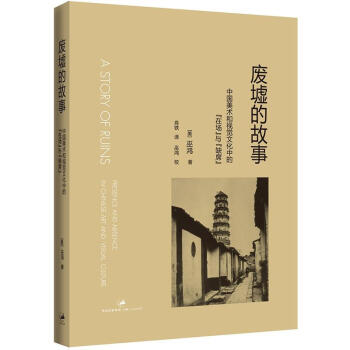

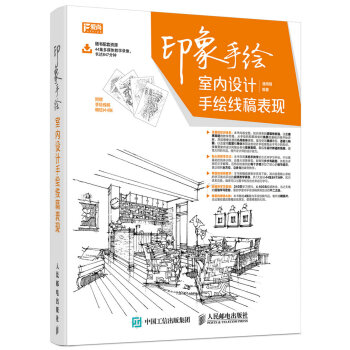
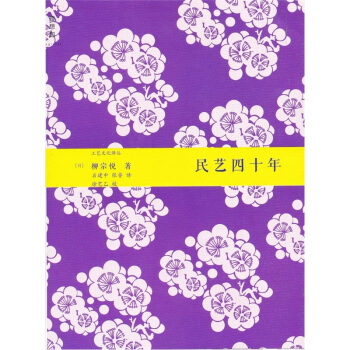

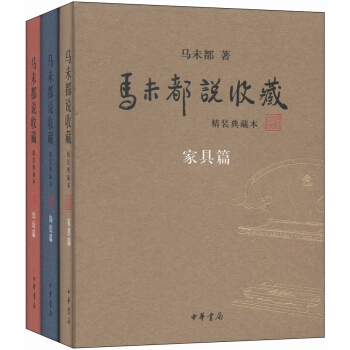



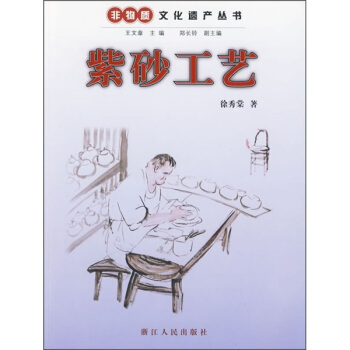
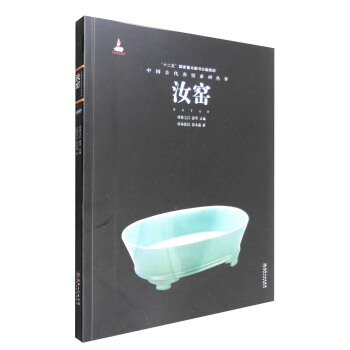



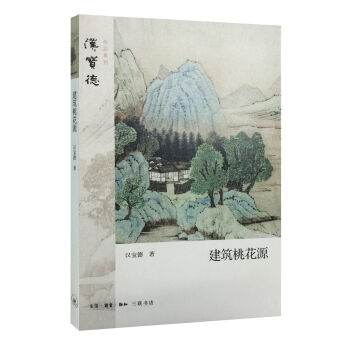

![電影分析基礎教程 [Grundkurs Filmanalyse] pdf epub mobi 電子書 下載](https://pic.windowsfront.com/11882544/56d64d47Ndbf497f7.jpg)


